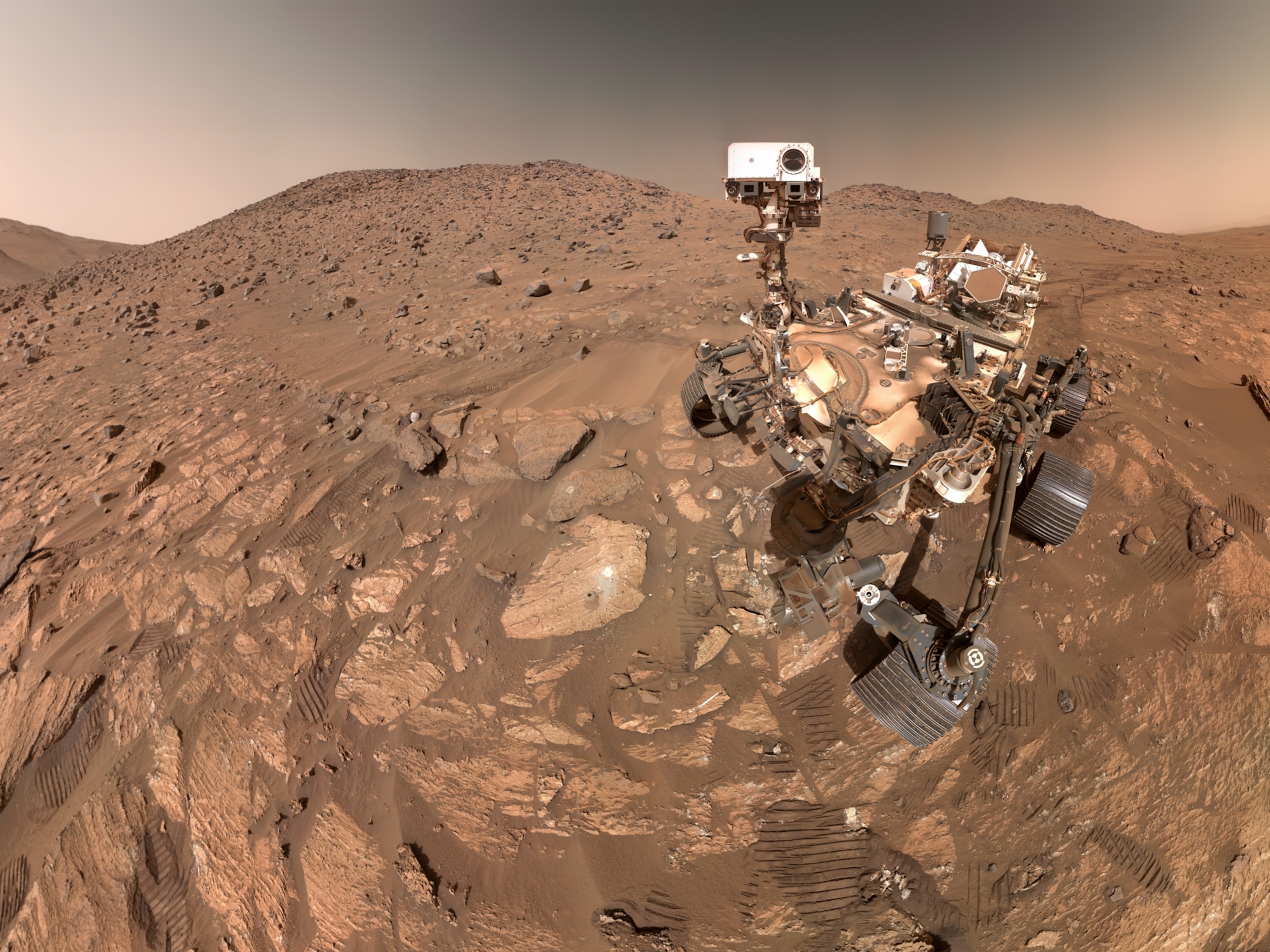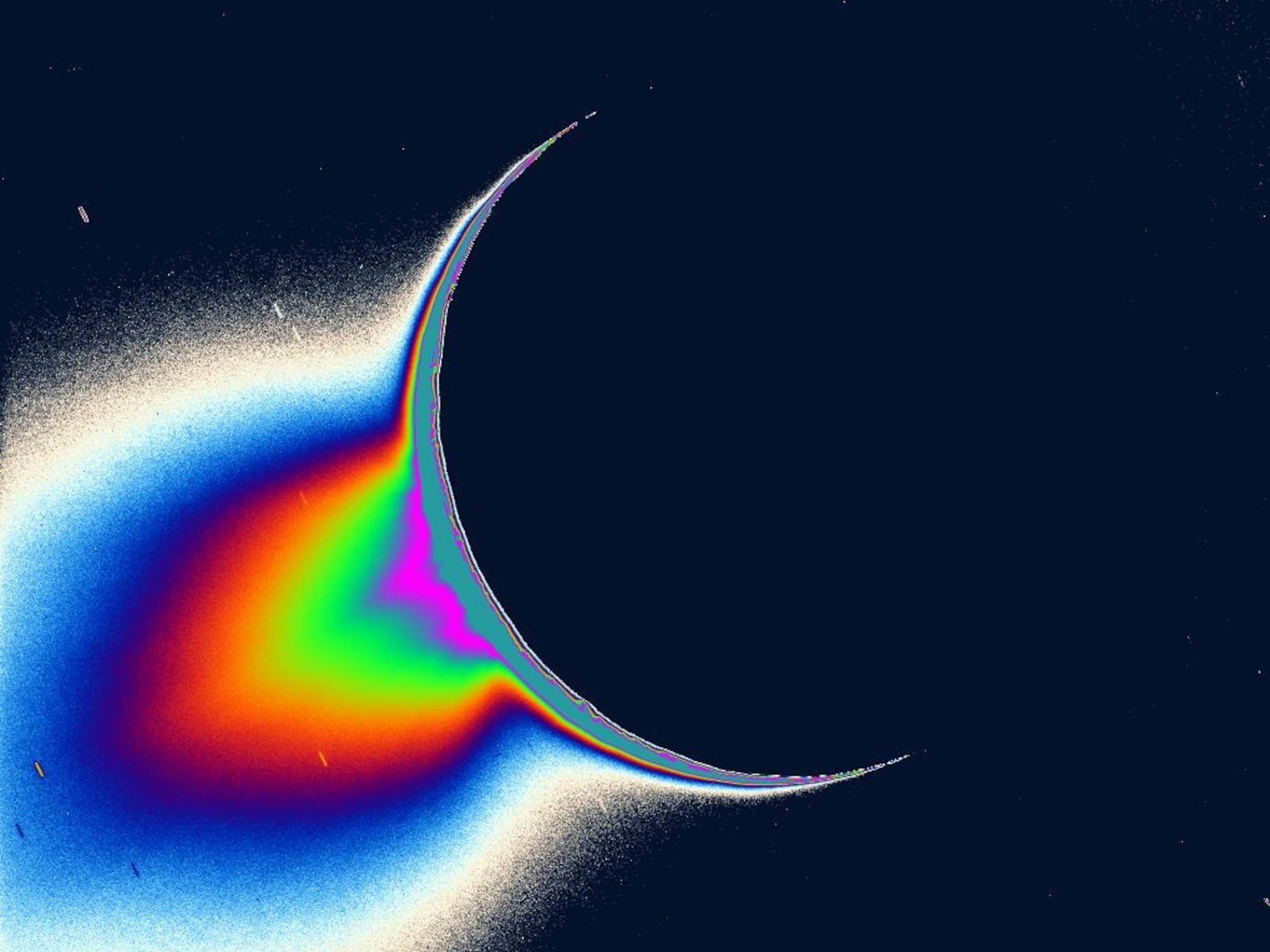
Earthworms Reproduce in Simulated Mars Soil—a First
Scientists hope that common earthworms could one day be used to help humans grow crops on the red planet.
A number of conditions make Earth hospitable for life as we know it, and one of them is the soil in which we grow our food. It's full of a complicated mix of nutrients, bacteria, and fungi that allow plants to grow. By contrast, soil on Mars has been found to be sterile and full of potentially toxic compounds.
As humans race toward the red planet, how to live and eat once there will be a major hurdle. Scientists think it's possible to sustainably grow crops on Mars, but to do this, they'll need to modify the planet's dirt. Biologist Wieger Wamelink thinks earthworms may help.
At his Dutch research lab at Wageningen University, two small worms were recently born from a colony living in soil created by NASA to simulate the dirt found on Mars.
For Wamelink, who's been working in the research lab since 2013, the successful births indicate that worms digging through the simulated soil can not only live—they might just thrive. On Earth, worms play a crucial role in the agricultural cycle, and this gives researchers hope they might one day do the same thing on another world.
Virtuous Cycle
For a self-sustaining agricultural system to exist on Mars, no part of the crop plant can go to waste. Worms could play a role by taking spent parts of the plant, like the stems and leaves, and breaking them down into nutrients that could be used later. In addition to dealing with this dead organic matter, earthworms create channels in the dirt that allow water to penetrate the plants' roots more evenly.
"[Worms] grab organic matter from the top of the soil—eat it, chew it—and when they poo it out, bacteria can break it down further. Otherwise [without worms] you deplete the nutrients in the soil," Wamelink explains.
"On Mars," he adds, "you cannot allow anything to be lost."

His research is still in a very preliminary phase, and complete Martian conditions have yet to be simulated by researchers attempting to grow food. The bacteria that convert worm excrement to nutrients were naturally occurring in Wamelink's lab. On Mars, this wouldn't be the case.
Wamelink also enriched the soil with nitrogen by adding a type of fertilizer called pig slurry. He theorizes that on Mars, manure would have to be made from sterilized human poop.
To know for sure if it's feasible to grow crops on Mars, as in the book and movie The Martian, researchers will need to simulate conditions more like those seen on the red planet. And to do this, they'll need more accurate soil samples.
That's where Trent Smith comes in. He's a space biologist who manages NASA's Exploration Mission 1. While working on the organization's Vegetable Production System (Veggie for short), Smith helped create a type of soil called Mars 1A—from which the soil used by researchers like Wamelink is derived.
Dealing With Toxins
For the most part, Smith says, they've been able to accurately replicate Martian soil based on spectral imaging of the planet, but the faux soil is still missing one key compound found on Mars—perchlorates. The chemical class is created on Earth by certain industrial activities, but researchers haven't yet been able to replicate it accurately in the simulated Martian soil.
Microbes survive well in perchlorates, and it's still possible for plants to grow in soil containing the substance, both Wamelink and Smith say. But the compounds can be lethal to people who consume them or eat plants grown in them. In studies where worms were exposed to high levels of perchlorates, most did not survive.
"The plant studies assume that you remediated the perchlorate," Smith says.
To both Wamelink and Smith, figuring out a natural process to remove perchlorate from Martian soil remains the largest hurdle in the way of growing a sustainable agricultural system on the planet.
Wamelink also plans to research the type of bacteria and fungi most adaptive to the red planet's currently inhospitable soil. Once they've figured that out, there's still another hurdle: how to pollinate their plants. So far, researchers have been doing it by hand with a tiny brush—a task that would be too laborious on Mars.
As for which animal to recruit as a potential red planet pollinator, Wamelink has a suggestion: "We are guessing it may be the bumblebee."





